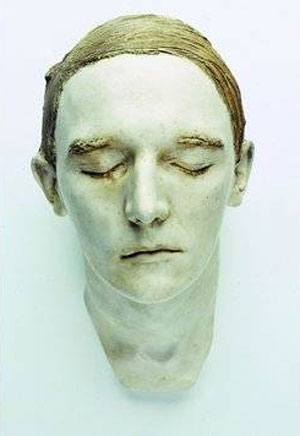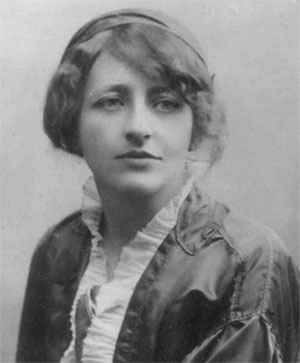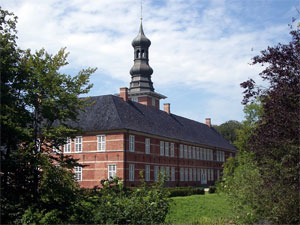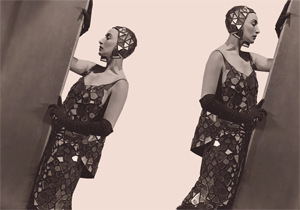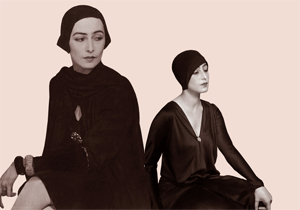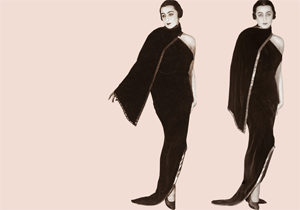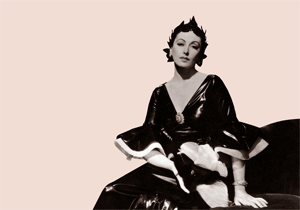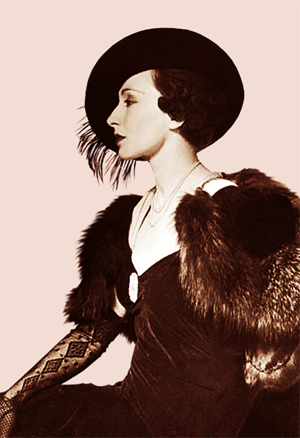Johann Jakob Bachofenby Wikipedia
Accessed: 3/5/18
NOTICE: THIS WORK MAY BE PROTECTED BY COPYRIGHTYOU ARE REQUIRED TO READ
THE COPYRIGHT NOTICE AT THIS LINK BEFORE YOU READ THE FOLLOWING WORK, THAT IS AVAILABLE SOLELY FOR PRIVATE STUDY, SCHOLARSHIP OR RESEARCH PURSUANT TO 17 U.S.C. SECTION 107 AND 108. IN THE EVENT THAT THE LIBRARY DETERMINES THAT UNLAWFUL COPYING OF THIS WORK HAS OCCURRED, THE LIBRARY HAS THE RIGHT TO BLOCK THE I.P. ADDRESS AT WHICH THE UNLAWFUL COPYING APPEARED TO HAVE OCCURRED. THANK YOU FOR RESPECTING THE RIGHTS OF COPYRIGHT OWNERS.
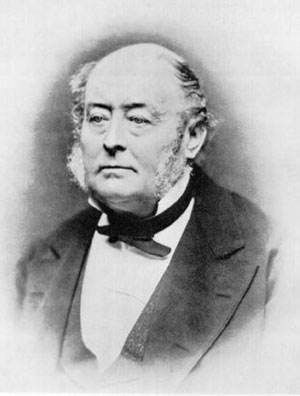
J. J. Bachofen
Born 22 December 1815
Basel, Switzerland
Died 25 November 1887 (aged 71)
Basel, Switzerland
Nationality Swiss
Scientific career
Fields Roman law, anthropology
Johann Jakob Bachofen (22 December 1815 – 25 November 1887) was a Swiss antiquarian, jurist, philologist, and anthropologist, professor for Roman law at the University of Basel from 1841[1] to 1845.
Bachofen is most often connected with his theories surrounding prehistoric matriarchy, or Das Mutterrecht, the title of his seminal 1861 book Mother Right: an investigation of the religious and juridical character of matriarchy in the Ancient World.
Bachofen assembled documentation demonstrating that motherhood is the source of human society, religion, morality, and decorum. He postulated an archaic "mother-right" within the context of a primeval Matriarchal religion or Urreligion.Bachofen became an important precursor of 20th-century theories of matriarchy, such as the Old European culture postulated by Marija Gimbutas from the 1950s, and the field of feminist theology and "Matriarchal Studies" in 1970s feminism.
BiographyBorn into a wealthy Basel family active in the silk industry, Bachofen studied in Basel and in Berlin under August Boeckh, Karl Ferdinand Ranke and Friedrich Carl von Savigny, as well as in Göttingen. After completing his doctorate in Basel, he studied for another two years in Paris, London and Cambridge. He was called to the Basel chair for Roman law in 1841, but he retired early in 1845, and published most of his works as a private scholar. Bachofen is buried at the Wolfgottesacker cemetery in Basel.
Das MutterrechtBachofen's 1861 Das Mutterrecht proposed four phases of cultural evolution which absorbed each other:
1. Hetaerism: a wild nomadic 'tellurian' [= chthonic or earth-centered] phase, characterised by him as communistic and polyamorous, whose dominant deity he believed to have been an earthy proto Aphrodite.
2. Das Mutterecht: a matriarchal 'lunar' phase based on agriculture, characterised by him by the emergence of chthonic mystery cults and law. Its dominant deity was an early Demeter according to Bachofen.
3. The Dionysian: a transitional phase when earlier traditions were masculinised as patriarchy began to emerge. Its dominant deity was the original Dionysos.
4. The Apollonian: the patriarchal 'solar' phase, in which all trace of the Matriarchal and Dionysian past was eradicated and modern civilisation emerged.
While based on an imaginative interpretation of the existing archaeological evidence of his time, this model tells us as much about Bachofen's own time as it does about the past.
ReceptionThere was little initial reaction to Bachofen’s theory of cultural evolution, largely because of his impenetrable literary style, but eventually, along with furious criticism,
the book inspired several generations of ethnologists, social philosophers, and even writers: Lewis Henry Morgan; Friedrich Engels, who drew on Bachofen for The Origin of the Family, Private Property and the State; Thomas Mann; Jane Ellen Harrison, who was inspired by Bachofen to devote her career to mythology; Walter Benjamin; Erich Fromm; Robert Graves; Rainer Maria Rilke; Joseph Campbell; Otto Gross; Erich Neumann and opponents such as Julius Evola.Friedrich Engels analysed Bachofen's views as follows:[2]
"(1) That originally man lived in a state of sexual promiscuity, to describe which Bachofen uses the mistaken term "hetaerism";
(2) that such promiscuity excludes any certainty of paternity, and that descent could therefore be reckoned only in the female line, according to mother-right, and that this was originally the case amongst all the peoples of antiquity;
(3) that since women, as mothers, were the only parents of the younger generation that were known with certainty, they held a position of such high respect and honor that it became the foundation, in Bachofen's conception, of a regular rule of women (gynaecocracy);
(4)
that the transition to monogamy, where the woman belonged to one man exclusively, involved a violation of a primitive religious law (that is, actually a violation of the traditional right of the other men to this woman), and that in order to expiate this violation or to purchase indulgence for it the woman had to surrender herself for a limited period." (Friedrich Engels, 1891: see link below)
A selection of Bachofen's writings was translated as Myth, Religion and Mother Right (1967). A fuller edited English edition in several volumes is being published.
As has been noted by Joseph Campbell in Occidental Mythology and others, Bachofen's theories stand in radical opposition to the Aryan origin theories of religion, culture and society, and both Campbell and writers such as Evola have suggested that Bachofen's theories only adequately explain the development of religion among the pre-Aryan cultures of the Mediterranean and the Levant, and possibly Southern Asia, but that a separate, patriarchal development existed among the Aryan tribes which conquered Europe and parts of Asia.Works• De legis actionibus de formulis et de condictione. Dissertation Basel. Dieterich, Göttingen 1840.
• Das Naturrecht und das geschichtliche Recht in ihren Gegensätzen. Basel 1841. reprint: Off. Librorum, Lauterbach 1995, ISBN 3-928406-19-1
• Römisches Pfandrecht. Schweighauser, Basel 1847. reprint: Keip, Goldbach 1997, ISBN 3-8051-0688-2
• Ausgewählte Lehren des römischen Civilrechts. Leipzig 1848. reprint: Keip, Goldbach 1997, ISBN 3-8051-0689-0
• Versuch über die Gräbersymbolik der Alten. Baasel 1859
• Oknos der Seilflechter : ein Grabbild : Erlösungsgedanken antiker Gräbersymbolik. Basel 1859. reprint: Beck, München 1923
• Das Mutterrecht: eine Untersuchung über die Gynaikokratie der alten Welt nach ihrer religiösen und rechtlichen Natur. Stuttgart: Verlag von Krais und Hoffmann, 1861 (google books link)
• abbreviated edition, ed. Hans-Jürgen Heinrichs. (Suhrkamp Taschenbücher Wissenschaft; Nr.135.) Frankfurt am Main: Suhrkamp, 1975 ISBN 3-518-27735-9
• excerpts edited as Mutterrecht und Urreligion: eine Auswahl, ed. Rudolf Marx. (Kröners Taschenausgabe; Band 52) Leipzig: A. Kröner, 1927; Stuttgart, 1954; 6th ed. 1984 ISBN 978-3-520-05206-3.
• Antiquarische Briefe vornemlich zur Kenntniss der ältesten Verwandtschaftsbegriffe. 2 vols. Trübner, Strassburg 1880 & 1886.
• Römische Grablampen nebst einigen andern Grabdenkmälern vorzugsweise eigener Sammlung. Basel 1890
• Gesammelte Werke (collected works) ed. Karl Meuli. Basel: B. Schwabe, 1943–1967, in 8 volumes (I-IV, VI-VIII and X)
• I. Antrittsrede; politische Betrachtungen
• II. Das Mutterecht, erste Hälfte
• III. Das Mutterecht, zweite Hälfte
• IV. Die Sage von Tanaquil
• VII. Die Unsterblichkeitslehre der orphanischen Theologie: Römische Grablampen
• VIII. Antiquarische Briefe
• X. Briefe
• ′′Mother Right′′ by J. J. Bachofen. Vols. 1-5. Lewiston, NY: Edwin Mellen, 2003-2008
References1. Eller, Cynthia (2011). Gentlemen and Amazons: The Myth of Matriarchal Prehistory, 1861–1900. University of California Press. p. 38.
2. Engels, Friedrich (2010). The Origin of the Family, Private Property and the State. Penguin UK. p. 49.
• Lullies, Reinhard & Schiering, Wolfgang (1988) Archäologenbildnisse: Porträts und Kurzbiographien von Klassischen Archäologen deutscher Sprache. Mainz: Verlag Philipp von Zabern; pp. 41–42
• Gender-Killer, A. G. (ed.) (2005) Antisemitismus und Geschlecht: von „effeminierten Juden“, „maskulinisierten Jüdinnen“ und anderen Geschlechterbildern. Münster: Unrast-Verlag ISBN 3-89771-439-6
• Wesel, Uwe (1980) Der Mythos vom Matriarchat: über Bachofens Mutterrecht und die Stellung von Frauen in frühen Gesellschaften vor der Entstehung staatlicher Herrschaft. Frankfurt am Main: Suhrkamp
• Gossmann, Lionel (1984) "Basle, Bachofen and the Critique of Modernity in the Second Half of the Nineteenth Century", in: Journal of the Warburg and Courtauld Institutes; 47, pp. 136–185
• Gossman, Lionel. “Orpheus Philologus: Bachofen versus Mommsen on the Study of Antiquity.” American Philosophical Society, 1983. [1] ISBN 1-4223-7467-X.
• Lionel Gossman, Basel in the Age of Burckhardt: A Study in Unseasonable Ideas (Chicago: University of Chicago Press, 2000), 109-200. ISBN 0-226-30498-1
• Wiedemann, Felix (2007) Rassenmutter und Rebellin: Hexenbilder in Romantik, völkischer Bewegung, Neuheidentum und Feminismus. Würzburg: Königshausen & Neumann ISBN 3-8260-3679-4.
• Rattner, Josef & Danzer, Gerhard (2003) "Johann Jakob Bachofen und die Mutterrechtstheorie", pp. 9–28 in: Europäische Kulturbeiträge im deutsch-schweizerischen Schrifttum von 1850-2000. Würzburg: Königshausen & Neumann ISBN 3-8260-2541-5
